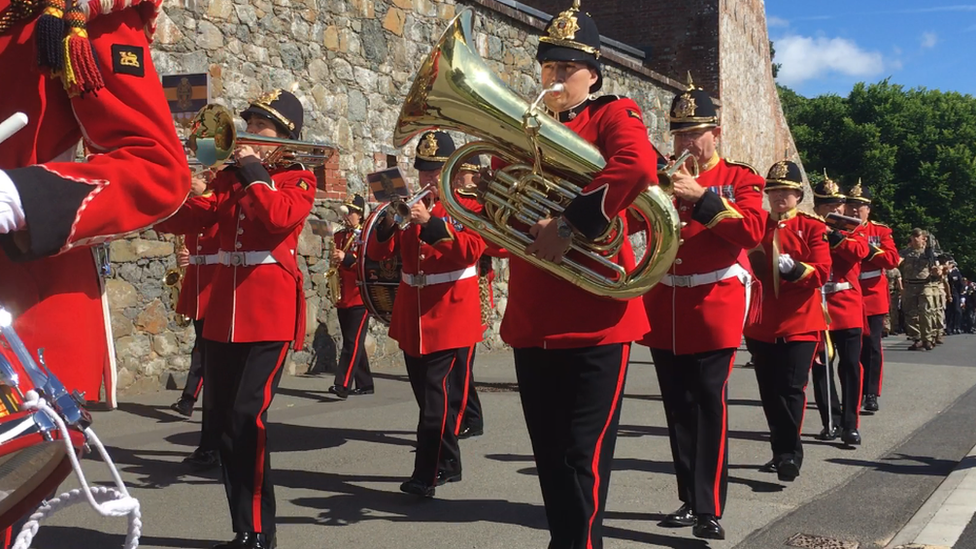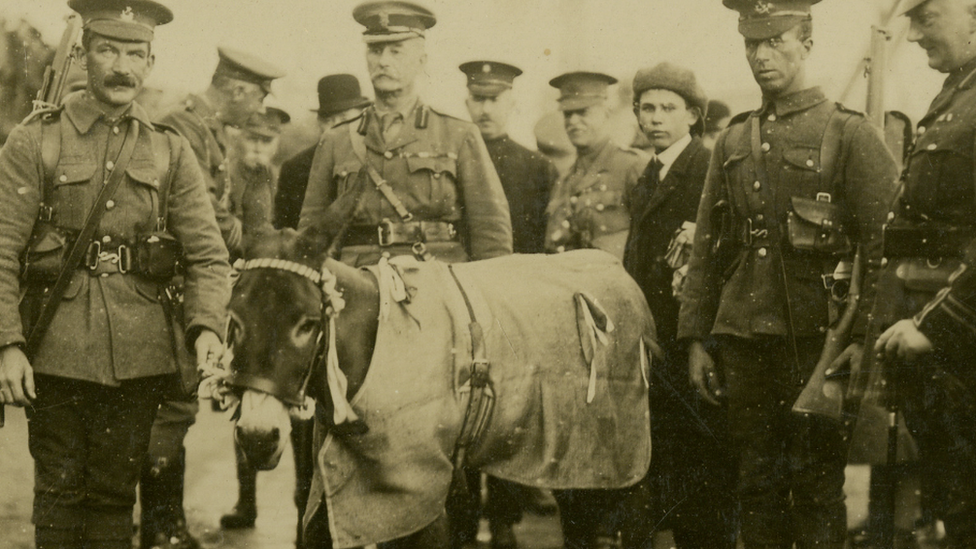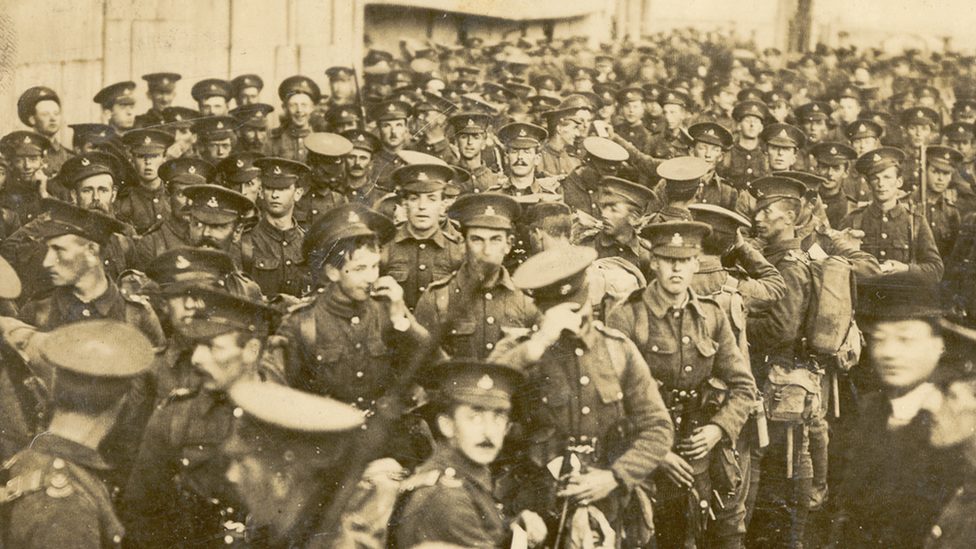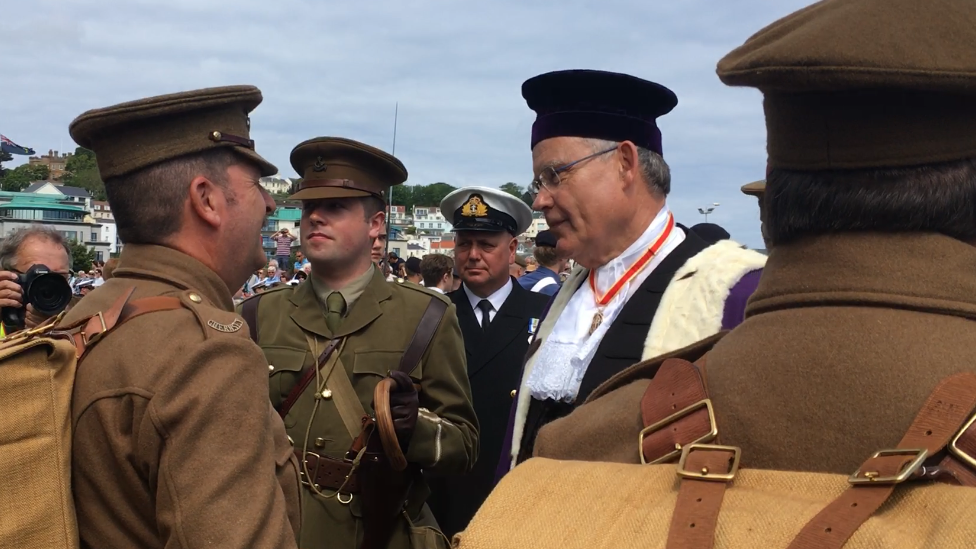Departure of Guernsey WW1 troops recreated
- Published

The parade set off from Belvedere Field, where the RGLI received some of its training before heading to the Western Front
Hundreds of people have recreated the first march of the Royal Guernsey Light Infantry (RGLI).
On 1 June, 1917, about 1,000 RGLI troops marched from the outskirts of St Peter Port to the island's harbour.
They boarded SS Lydia for further training in Kent, before reaching the French frontline in September.
Some 3,549 men served in the Guernsey force, with more than 40% killed or injured.
Up to 800 Guernsey volunteers also served with Irish regiments during World War One.
Military enthusiasts, school children and veterans gathered to re-create the departure.

Joey the Donkey - Guernsey's national animal - also accompanied the RGLI as its mascot, bearing the regiment's battle colours
On Sunday people lined the parade route to St Peter Port Harbour.
The parade left Fort George, one of two former training sites, at 10:00 BST and followed the route taken 100 years earlier - arriving at the harbour at about 10:30 BST.
Guernsey Bailiff Sir Richard Collas addressed those gathered, saying: "Above all, be proud of what we've done today. And be proud of what those brave men achieved 100 years ago. We will always remember them."
Some 2,430 men were recruited in Guernsey, along with others in the UK. Many served in the Battle of Cambrai, the first major tank offensive of the war.

The Guernseymen received advanced military training at Bourne Park Camp near Canterbury before sailing to France in 1917

Guernsey's Bailiff Sir Richard Collas (right) speaks to members of Guernsey's Military History Company